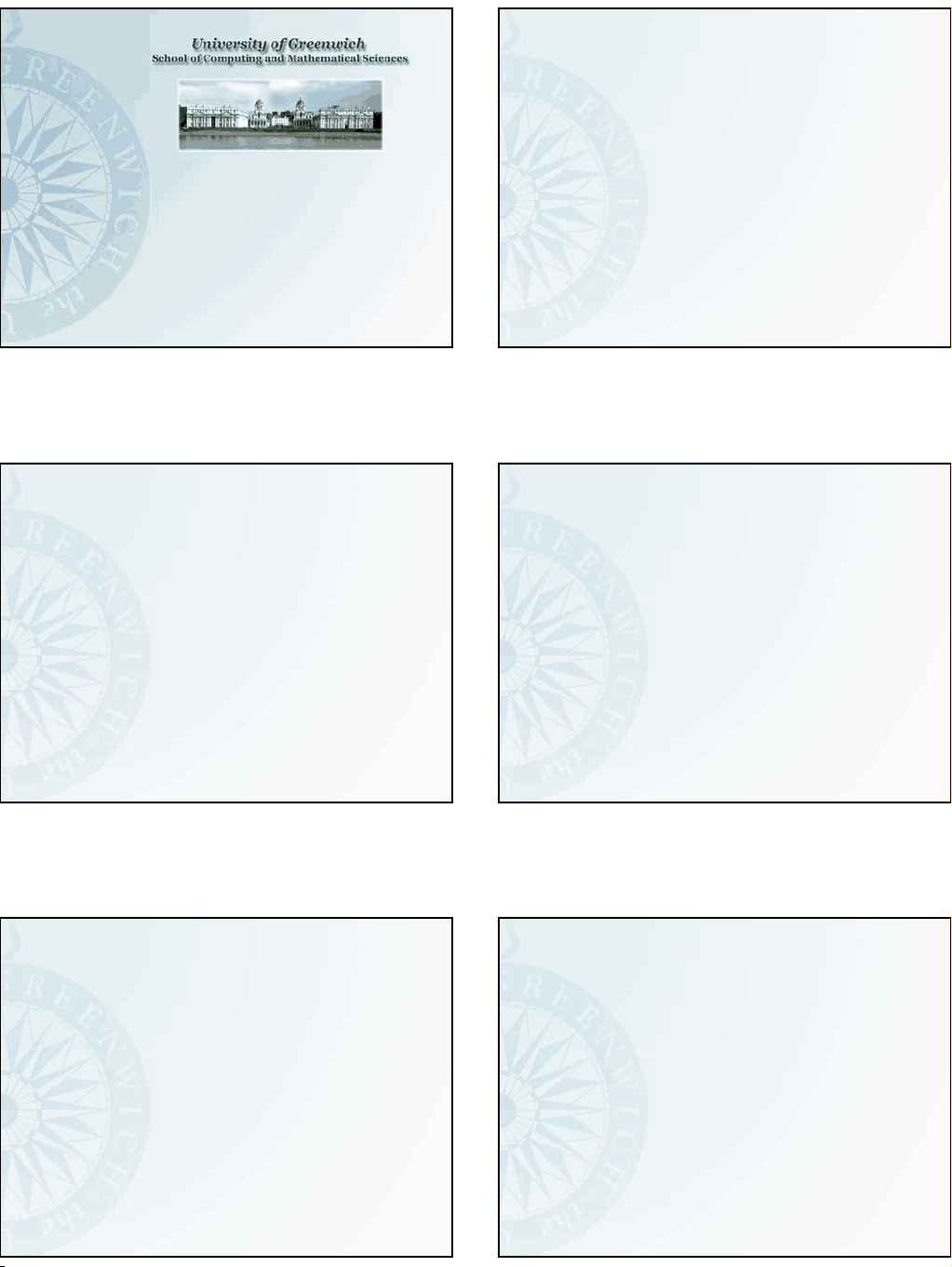
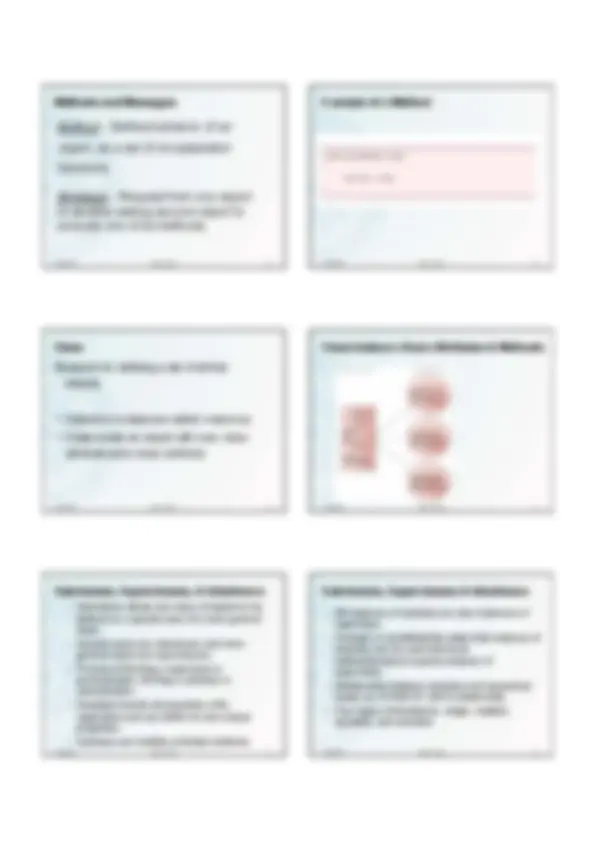
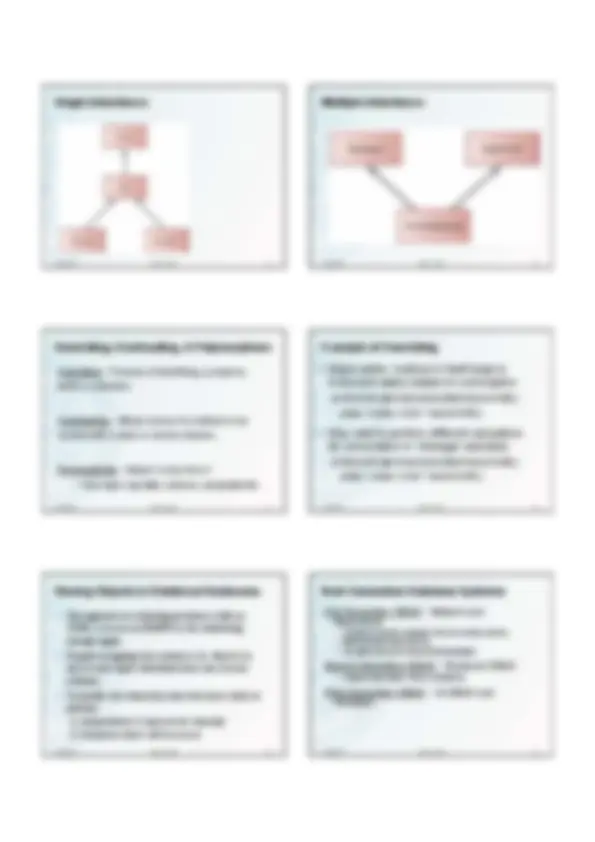
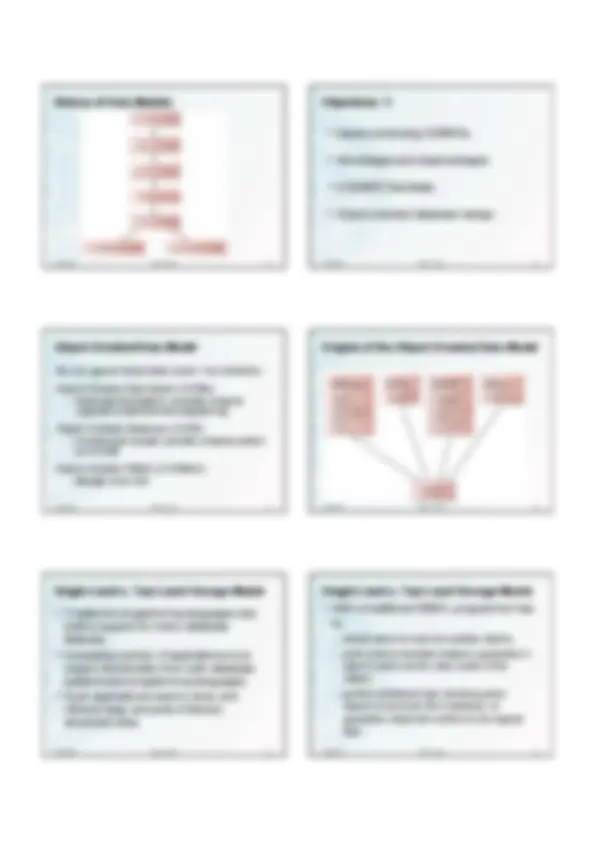
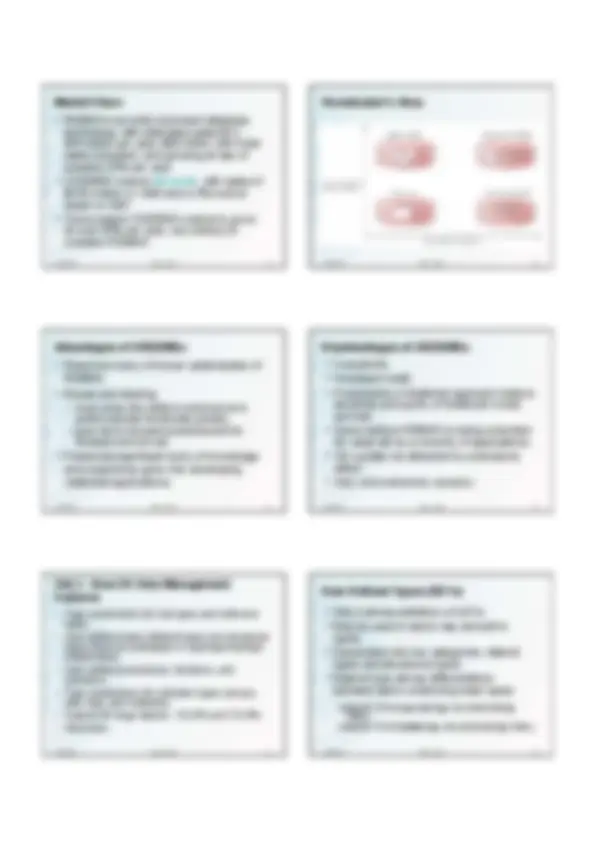
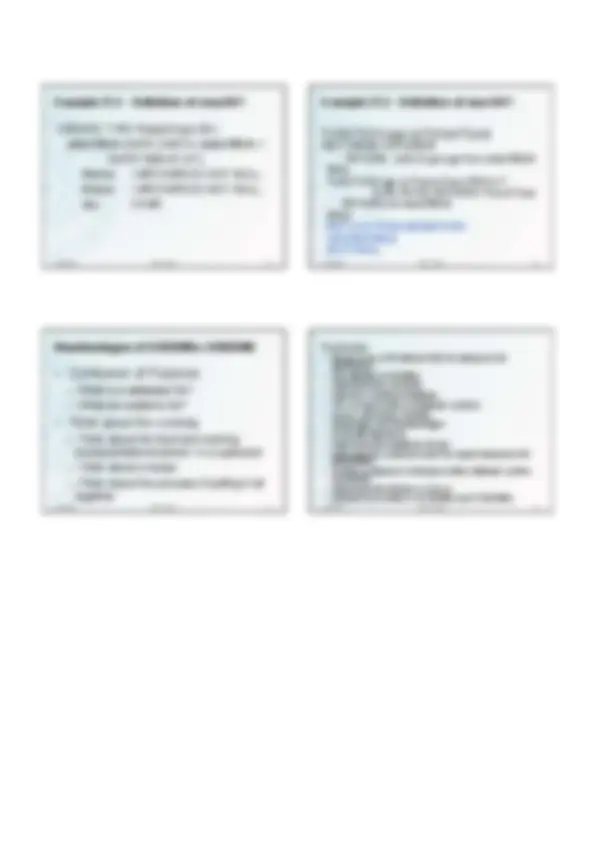


Study with the several resources on Docsity

Earn points by helping other students or get them with a premium plan


Prepare for your exams
Study with the several resources on Docsity

Earn points to download
Earn points by helping other students or get them with a premium plan
Community
Ask the community for help and clear up your study doubts
Discover the best universities in your country according to Docsity users
Free resources
Download our free guides on studying techniques, anxiety management strategies, and thesis advice from Docsity tutors
Detail Summery about Object Oriented Databases, Advanced database applications, Unsuitability of RDBMSs for advanced database applications, Object-oriented concepts, Problems of storing objects in relational database, The next generation of database systems.
Typology: Study notes
1 / 9

This page cannot be seen from the preview
Don't miss anything!






DBDI/ Lecture 17 Object Oriented Databases
Mr. Alun Butler & Dr. Ala Al-Zobaidie
The slides are based on the textbook Database Systems by Thomas Connolly & Carolyn Begg 30/05/2007 DBDI / OODB 2
Lecture - Objectives
30/05/2007 DBDI / OODB 3
Advanced Database Applications
Interactive and Dynamic Web Sites
Weaknesses of RDBMSs
Entities
Weaknesses of RDBMSs
30/05/2007 DBDI / OODB 7
Weaknesses of RDBMSs
30/05/2007 DBDI / OODB 8
Example - Recursive Query
Find all managers who, directly or indirectly, manage staff member S005?
Problem: you do not know # recursion levels in hierarchy! e.g. change S005 above to any individual! Solution => embedded SQL
30/05/2007 DBDI / OODB 9
Weaknesses of RDBMSs
30/05/2007 DBDI / OODB 10
Weaknesses of RDBMSs
Object-oriented concepts
Advantages of OIDs
30/05/2007 DBDI / OODB 19
Single Inheritance
30/05/2007 DBDI / OODB 20
Multiple Inheritance
30/05/2007 DBDI / OODB 21
Overriding, Overloading, & Polymorphism
Overriding - Process of redefining a property within a subclass.
Overloading - Allows name of a method to be reused with a class or across classes.
Polymorphism - Means ' many forms '.
30/05/2007 DBDI / OODB 22
Example of Overriding
Storing Objects in Relational Databases
Next Generation Database Systems
First Generation DBMS - Network and Hierarchical
30/05/2007 DBDI / OODB 25
History of Data Models
30/05/2007 DBDI / OODB 26
Objectives / 2
30/05/2007 DBDI / OODB 27
Object-Oriented Data Model
No one agreed object data model. One definition: Object-Oriented Data Model (OODM)
30/05/2007 DBDI / OODB 28
Origins of the Object-Oriented Data Model
Single-Level v. Two-Level Storage Model
Single-Level v. Two-Level Storage Model
30/05/2007 DBDI / OODB 37
OODBMS Manifesto
30/05/2007 DBDI / OODB 38
OODBMS Manifesto
30/05/2007 DBDI / OODB 39
OODBMS Manifesto
30/05/2007 DBDI / OODB 40
Advantages of OODBMSs
Disadvantages of OODBMSs
Object-Relational DBMSs – Objectives /
30/05/2007 DBDI / OODB 43
Market Share
Stonebraker’s View
30/05/2007 DBDI / OODB 45
Advantages of ORDBMSs
30/05/2007 DBDI / OODB 46
Disadvantages of ORDBMSs
SQL3 - New OO Data Management Features
User-Defined Types (UDTs)